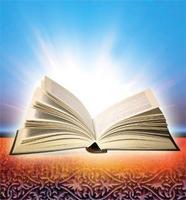The Book of Zohar – a Real Wonder of the World
The seven wonders of the ancient world, the medieval world, and the modern world… the lists keep piling up. People have always been fascinated by manmade structures that please their eyes, give them some enigmatic flavor and make them proud of belonging to the human race.
If someone told you that there is one wonder that everyone had overlooked and it is a book, incredulously you would say, “C’mon, a book? It can’t be a wonder of the world.”
The Book of Zohar—for millennia this book has mesmerized the minds of old and young, religious and atheists, philosophers and academics, and interest in it just keeps growing. In fact, the keyword “Zohar” is one of the most popular searches on the Internet. So, what is inside this book? What is so special about these ancient Aramaic and Hebrew texts that makes people hold their breath and then say, “Wow!”?
A River of Light
“Zohar” in Hebrew means Splendor, Radiance, or Light. For the poet in us, the text of The Book of Zohar can be likened to a river flowing out of the Garden of Eden and through a person’s heart. Anyone who opens his heart will be washed by its waters, will be cleansed and will begin to see.
We often hear that Kabbalah is The Zohar. Why? The matter is that this book was written in a very special style, which places us into a multi-dimensional space and walks us through it. While it tells us fables and stories on the outside, at the same time it gradually immerses us in a hidden reality, called the Upper World. It attracts us with its intricate, unusual tales and draws us inside. As we become inspired by it, we gradually enter the Upper World.
Certainly, to grasp the spirit of this book that was written two thousand years ago, we have to aspire and be intrigued. We have to develop a certain sensitivity and comprehension to be able to tune into the people who wrote The Zohar.
The men who wrote The Zohar were a group of ten great Kabbalists led by the famous Rabbi Shimon Bar Yochai (RASHBI). These ten men, who gathered in a special place, in a special time, represented through their inner, spiritual qualities the “ten Sefirot”— the ten founding blocks of creation. They were able to come down from the enormous height of their spiritual attainment to our simple human level in order to explain such concepts that theoretically we are unable to grasp. They lure us with their fables, and like kids who mature from listening to tales, so do we develop from reading this text. With time, we gradually begin feeling the Upper World because a wondrous quality called ”the Upper Light” shines upon us as we read.
This wonderful quality of the Light is simply miraculous. People who begin reading this book immediately feel its magnetic radiance, which draws them back to it time and time again. They can read and re-read it multiple times throughout their entire lives. It always renews their impressions and never becomes boring. The Zohar becomes like a breath of air, which they just need to get. They continuously yearn for those inner changes which they experience while engaged in reading The Zohar.
Parallel Worlds
The uniqueness of The Zohar is that it creates for us a projection of the Upper World to our world. It was written in two spoken languages of Ancient Babylon: Hebrew and Aramaic. These two languages represent two levels of perception. One language narrates stories in images of our familiar world, while the other takes us into the spiritual dimension, revealing to us two worlds one parallel to the other. It tells us stories about this world and in parallel it tells us about its source in the Upper World, thus drawing an image of one world overlaying the other.
We then find ourselves between two worlds—the one we are very familiar with and another one that we cannot perceive, but somehow feel that it’s there. However, this image of two worlds exists only in our imagination. In actuality, it is one complete picture, which we still perceive as two. In our world, images are visual and we see, feel, and understand them. But images in the Upper World reflect attributes like qualities, forces, desires and intentions. To start experiencing them together we need to imagine ourselves on that spiritual level, place ourselves there, and live through the state where we exist simultaneously in these two dimensions.
To experience this fascinating spiritual journey we need to imagine that The Zohar is telling us about ourselves and the spiritual states we are going through. We have to be so “thirsty” for this experience that we feel like an empty well. Then, by simply following the text, letting the text flow through us, and trying to feel the picture that The Zohar is drawing for us, we will begin touching and feeling the Upper World, thus getting closer to our birth in the Spiritual World.
Now, isn’t that a real wonder of the world?
